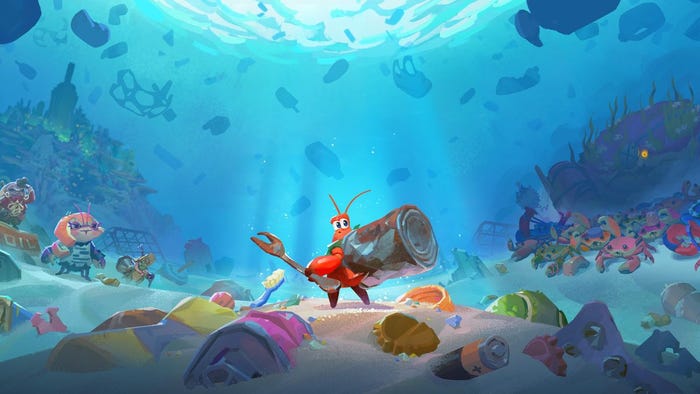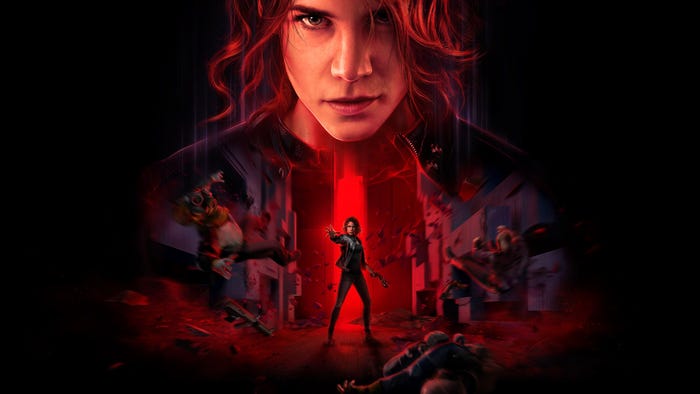Opinion: Be My Valentine - The Top 5 Game Romances
In a special Valentine's Day feature, Gamasutra's Leigh Alexander looks at the most memorable romantic relationships in the history of video games, from Half-Life 2's Gordon and Alyx to Final Fantasy's Tidus and Yuna, and beyond.

[In a special Valentine's Day feature, Gamasutra's Leigh Alexander looks at the most memorable romantic relationships in the history of video games, in a feature originally printed on Gamasutra editor weblog GameSetWatch.com.] Last week’s GameSetWatch column wondered how games might mature enough to allow for believable sexuality, and concluded that aiming for intimacy is a good start. Plenty of games already use intimacy, or the emotional connection created for the player between their character and another, as a story element, and romance has been a key driver in game stories and character development, at times even successfully. What makes a good game love story? Surely, the same recipe that works in other media can be extended to the game world – well-developed characters, a few key, stirring moments, a protagonist with which the player can empathize, and a love object that the player can feel something about through that empathy. But games also require certain elements that static entertainment media don’t. After all, the most blunt differentiator of games from other forms of entertainment is interactivity – and given that love is all about interaction, games have the possibility of creating more engaging romances than any of their sister media. Just like we learned last week with sexuality and intimacy, games might not have explored all of their potential yet. That’s all right; it’s a young, adolescent medium, and adolescents are not the smoothest operators. But in the spirit of Valentine’s Day, let’s look at five game romances that are really on the right track.  5. Tidus And Yuna In particular, the RPG genre often features a romance or two, and the Final Fantasy series is no exception. As that sort of game is intended as an epic story, tracking the development either literally or metaphorically of a hero from boy to man, love often plays a role. But FFX, in its time one of the heralds of a new console generation, evolved the RPG romance a step beyond anything we’d yet seen in Final Fantasy. Perhaps it was the arresting fantasy-realism of the character faces, for its time unprecedented. But Tidus’ relationship to Yuna played a significant role in investing the storyline with weight – she was a well-crafted, empathetic character whose fate was ostensibly in the player’s hands. Final Fantasy characters are perhaps so popular among their fans because they’re not too thoroughly or obtrusively drawn, thereby leaving room for player imagination. Yuna was framed in a way that led the player to care for her, creating the relationship between her and an otherwise forgettable hero. FFX was much more a story about the nature of humanity and the philosophies of religion and war than it was a romantic drama, but where that series’ stories sometimes compound their scale until they become implausible, this point of a smaller, more human struggle helped FFX retain relevance.
5. Tidus And Yuna In particular, the RPG genre often features a romance or two, and the Final Fantasy series is no exception. As that sort of game is intended as an epic story, tracking the development either literally or metaphorically of a hero from boy to man, love often plays a role. But FFX, in its time one of the heralds of a new console generation, evolved the RPG romance a step beyond anything we’d yet seen in Final Fantasy. Perhaps it was the arresting fantasy-realism of the character faces, for its time unprecedented. But Tidus’ relationship to Yuna played a significant role in investing the storyline with weight – she was a well-crafted, empathetic character whose fate was ostensibly in the player’s hands. Final Fantasy characters are perhaps so popular among their fans because they’re not too thoroughly or obtrusively drawn, thereby leaving room for player imagination. Yuna was framed in a way that led the player to care for her, creating the relationship between her and an otherwise forgettable hero. FFX was much more a story about the nature of humanity and the philosophies of religion and war than it was a romantic drama, but where that series’ stories sometimes compound their scale until they become implausible, this point of a smaller, more human struggle helped FFX retain relevance.  4. James And Mary This column has in the past sung the praises of Silent Hill 2’s thematic complexity. Several layers in, it’s perhaps the furthest thing away from a love story as you can get – it’s a horror story, one man’s trip through limbo into personal hell. But despite the chilling revelation at the core of James Sunderland, it seems to be his ache for Mary that dazes him in the surreal, mist-shrouded Silent Hill. The player can actually be saved by how many times Mary’s strange letter is viewed. Mary’s much trampier doppelganger actually manifests herself in Silent Hill, seeming to demonstrate all the traits that, deep down, James resented his dead wife for not possessing. This isn’t romantic, but it’s realistic, as are James’ complicated and often contradictory emotions of lust, guilt, disgust and resentment surrounding the loss of his wife. It may be the most mature portrayal of a human relationship in any game, in all of its possible ugliness.
4. James And Mary This column has in the past sung the praises of Silent Hill 2’s thematic complexity. Several layers in, it’s perhaps the furthest thing away from a love story as you can get – it’s a horror story, one man’s trip through limbo into personal hell. But despite the chilling revelation at the core of James Sunderland, it seems to be his ache for Mary that dazes him in the surreal, mist-shrouded Silent Hill. The player can actually be saved by how many times Mary’s strange letter is viewed. Mary’s much trampier doppelganger actually manifests herself in Silent Hill, seeming to demonstrate all the traits that, deep down, James resented his dead wife for not possessing. This isn’t romantic, but it’s realistic, as are James’ complicated and often contradictory emotions of lust, guilt, disgust and resentment surrounding the loss of his wife. It may be the most mature portrayal of a human relationship in any game, in all of its possible ugliness.  3. Gordon Freeman And Alyx Vance Blame her fantastic AI. Or credit the fact that very little is actually known about Gordon Freeman, letting the player see every nuance of Alyx only through his eyes. Either way, it’s clear that Half-Life fans love her far beyond any interaction that is actually presented in the games. In a first-person shooter, one doesn’t expect character relationships to play a significant role, and it’s true that any relationship presented between Gordon and Alyx mostly leaves itself open to suggestion – and fingers-crossed hopefulness. Perhaps Half Life 2’s FPS gameplay actually reinforces the player’s – and therefore, Gordon’s – emotional attachment to Alyx. She frequently appears as a point of respite after trigger-finger chaos, and during the fast-paced and high-stakes points in the plot, the player knows that Alyx is doing her part to make sure you survive. The storyline in particular fosters a sense of “you and me against the world,” and given how cute Alyx is, that’s just enough.
3. Gordon Freeman And Alyx Vance Blame her fantastic AI. Or credit the fact that very little is actually known about Gordon Freeman, letting the player see every nuance of Alyx only through his eyes. Either way, it’s clear that Half-Life fans love her far beyond any interaction that is actually presented in the games. In a first-person shooter, one doesn’t expect character relationships to play a significant role, and it’s true that any relationship presented between Gordon and Alyx mostly leaves itself open to suggestion – and fingers-crossed hopefulness. Perhaps Half Life 2’s FPS gameplay actually reinforces the player’s – and therefore, Gordon’s – emotional attachment to Alyx. She frequently appears as a point of respite after trigger-finger chaos, and during the fast-paced and high-stakes points in the plot, the player knows that Alyx is doing her part to make sure you survive. The storyline in particular fosters a sense of “you and me against the world,” and given how cute Alyx is, that’s just enough.  2. Yuri Hyuga And Alice Elliot The first two installments of the often overlooked and under-rated Shadow Hearts are distinguished from the often indistinguishable morass of RPG characters right from the start, each of them carved in much more detailed and endearing nuances than is common. At first blush, it’s not an uncommon pairing – a smartmouthed young man with demon powers against a properly salvation-oriented girl who looks like an angel. But where most RPGs suffer under the very principle we discussed last week – the infantilization of sexless fantasy -- Shadow Hearts was a much, much braver game than its peers in that it was willing to depict its characters in the shades of adults. In addition to bravery in characterization, Shadow Hearts advanced the paradigm for thematics and even for humor, in terms of its maturity. Perhaps it’s because of this pleasant surprise that the player’s tendency is to invest more fully in its storyline and endearing characters. Additionally, alongside the more traditional fantasy story, a parallel, smaller-scale drama of one doomed man’s battle with himself plays out. As the player is led to weigh the storyline and characters with more sincerity, Yuri’s relationship with Alice can no longer be just another RPG salvation story. Moreover, in Shadow Hearts 2, Yuri’s characterized throughout the game by Alice’s impact on him in a visceral, believable and often painfully intense way.
2. Yuri Hyuga And Alice Elliot The first two installments of the often overlooked and under-rated Shadow Hearts are distinguished from the often indistinguishable morass of RPG characters right from the start, each of them carved in much more detailed and endearing nuances than is common. At first blush, it’s not an uncommon pairing – a smartmouthed young man with demon powers against a properly salvation-oriented girl who looks like an angel. But where most RPGs suffer under the very principle we discussed last week – the infantilization of sexless fantasy -- Shadow Hearts was a much, much braver game than its peers in that it was willing to depict its characters in the shades of adults. In addition to bravery in characterization, Shadow Hearts advanced the paradigm for thematics and even for humor, in terms of its maturity. Perhaps it’s because of this pleasant surprise that the player’s tendency is to invest more fully in its storyline and endearing characters. Additionally, alongside the more traditional fantasy story, a parallel, smaller-scale drama of one doomed man’s battle with himself plays out. As the player is led to weigh the storyline and characters with more sincerity, Yuri’s relationship with Alice can no longer be just another RPG salvation story. Moreover, in Shadow Hearts 2, Yuri’s characterized throughout the game by Alice’s impact on him in a visceral, believable and often painfully intense way.  1. Ico And Yorda We discussed Ico and Yorda last week as an example of a significant step in the right direction for developing sincere intimacy in a game, and that it was. In the huge scale environments of ICO, empty save for their perplexingly minimalist puzzles and the lurking threat of shadows coalescing, the simple protect-and-lead dynamic between Ico and the ethereal princess Yorda took center stage. It’s hard to pin down exactly why this works so well. Protection and rescue missions, or situations wherein one needs to get a partner NPC to behave in a certain way, are historically frustrating, even loathsome. And in ICO’s day, we hadn’t nearly the AI tech that we have now, so the luminous little lady was prone to wandering off, or dawdling right off of the very button she needs to remain standing on. But somehow, that perceived absent-minded helplessness on Yorda’s part was actually endearing. No matter how often she got herself seized by shadows, the player never lost that immediate impulse of genuine motivation to go and rescue her. Again. The delight of that pairing lies in a few small details – the fashion of holding Yorda’s hand, for one thing, or the way both characters could drowse innocently side-by-side on the stone couches that act as save spots. Ico’s manner of speaking echoed the tonal patterns of real language, without forming recognizable words, contributing to the environment of suggestion without explicitness. Even the height disparity had a certain implacable charm in suggesting their ages as similar, but their physical development as less so, as is often the case with children that age. Which brings us to the irony – this list’s favorite and most sophisticated relationship is wholly innocent, between children. Which adds to its charm and sincerity, of course. The “aww” factor with young love is its touching simplicity, and ICO’s attention to detail for those simple gestures like head-on-shoulder and hand-holding was able to bring those elements to life beautifully. We’ve got plenty of inspiring seeds sown for romantic intimacy in games, and these are only the author’s personal favorite examples. Each instance on this list highlights some key features, from empathy to simplicity, that we hope will continue to be built upon in future titles – after all, don’t we all love a little romance? Happy Valentine’s Day! [Header image via 4CR.]
1. Ico And Yorda We discussed Ico and Yorda last week as an example of a significant step in the right direction for developing sincere intimacy in a game, and that it was. In the huge scale environments of ICO, empty save for their perplexingly minimalist puzzles and the lurking threat of shadows coalescing, the simple protect-and-lead dynamic between Ico and the ethereal princess Yorda took center stage. It’s hard to pin down exactly why this works so well. Protection and rescue missions, or situations wherein one needs to get a partner NPC to behave in a certain way, are historically frustrating, even loathsome. And in ICO’s day, we hadn’t nearly the AI tech that we have now, so the luminous little lady was prone to wandering off, or dawdling right off of the very button she needs to remain standing on. But somehow, that perceived absent-minded helplessness on Yorda’s part was actually endearing. No matter how often she got herself seized by shadows, the player never lost that immediate impulse of genuine motivation to go and rescue her. Again. The delight of that pairing lies in a few small details – the fashion of holding Yorda’s hand, for one thing, or the way both characters could drowse innocently side-by-side on the stone couches that act as save spots. Ico’s manner of speaking echoed the tonal patterns of real language, without forming recognizable words, contributing to the environment of suggestion without explicitness. Even the height disparity had a certain implacable charm in suggesting their ages as similar, but their physical development as less so, as is often the case with children that age. Which brings us to the irony – this list’s favorite and most sophisticated relationship is wholly innocent, between children. Which adds to its charm and sincerity, of course. The “aww” factor with young love is its touching simplicity, and ICO’s attention to detail for those simple gestures like head-on-shoulder and hand-holding was able to bring those elements to life beautifully. We’ve got plenty of inspiring seeds sown for romantic intimacy in games, and these are only the author’s personal favorite examples. Each instance on this list highlights some key features, from empathy to simplicity, that we hope will continue to be built upon in future titles – after all, don’t we all love a little romance? Happy Valentine’s Day! [Header image via 4CR.]
About the Author(s)
You May Also Like









